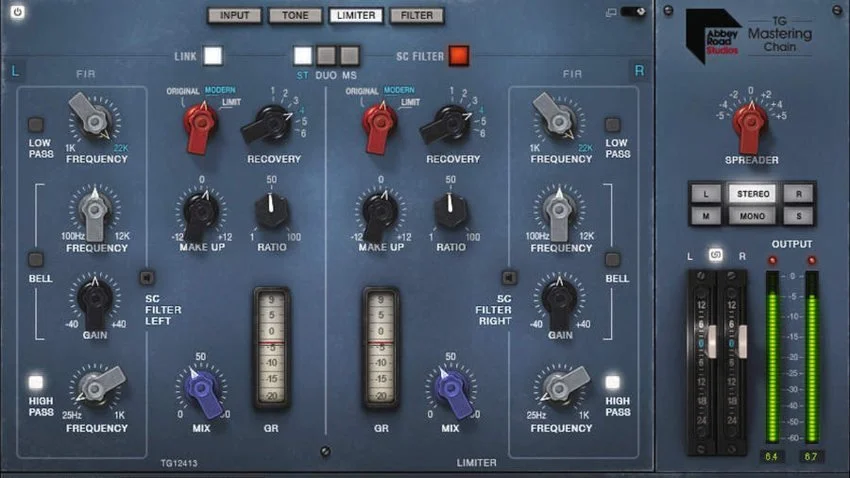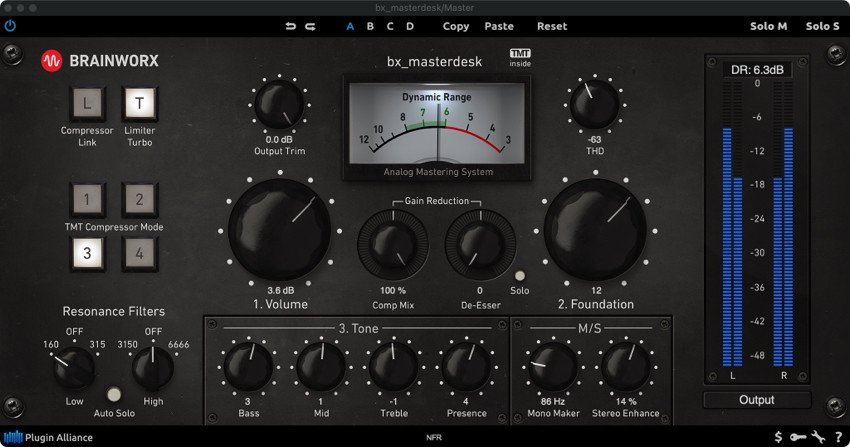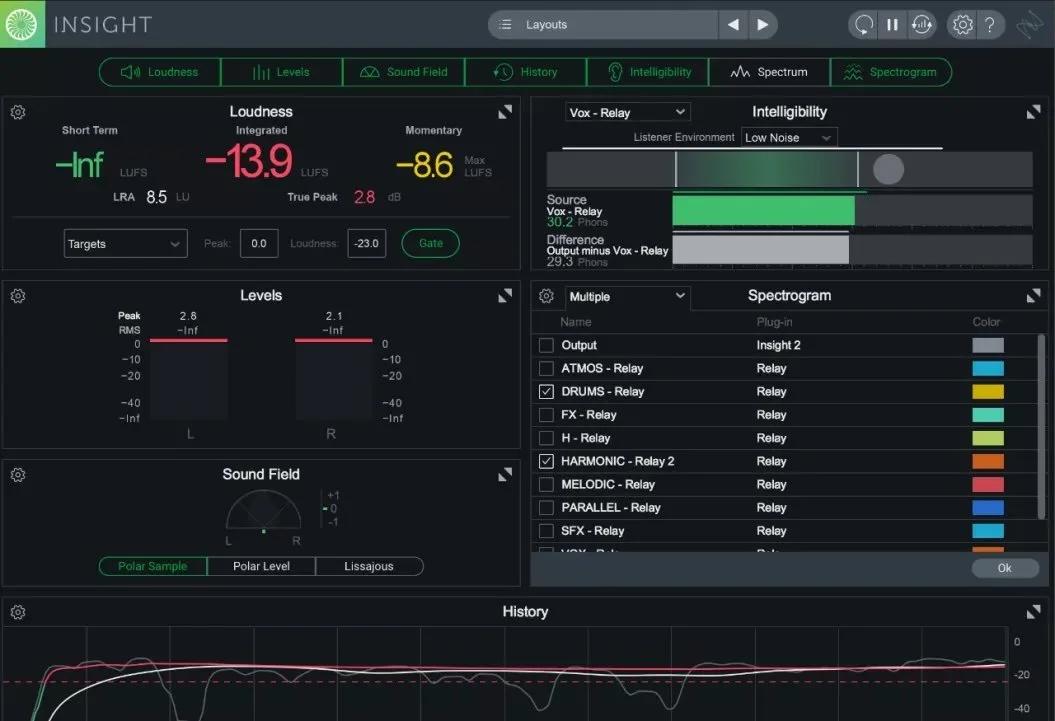I opened a can of worms. I asked some mixer friends what they put on their mix bus and why, I expected a couple of things. First, not a lot of answers… I got over fifty in a couple of hours. Second, I expected some conformity, such as the SSL master bus compressor. Not so, the answers were varied and the reasons for using certain equipment just as different. Read on to see if anyone has the same stuff as you… I doubt it!
Mix Bus Processing
If you’re new to the concept, mix bus processing is having either hardware or software across your final mix. Some people mix into the processing from the start of the mix, others add it later on in the process, some right at the end.
There’s various reasons for using mix bus processing, as you’ll read from just a small selection of the responses they are varied, but all equally valid. We’ve fixed some spelling but largely left the responses as they were written.
Chris Shaw
Vertigo SC2 - Mainly because it had a HPF on the side chain long before many of the SSL clones did.
Slate Virtual Tape Machine - it emulates the ATR 102. There are others that do as well but I'm very used to the way it sounds.
Waves Abbey Road TG mastering plugin - I really love the stereo spread control, and the limiter with the mix control sounds fantastic.
Ozone 10/11 For the peak limiter and occasional soft clipping
Melda MCompare - I love this mix A/B plugin. You can load WAV files into it but you can use other instances of it to feed the instance on your master bus. I keep a track with a playlist containing reference mixes or my previous mix and use an instance of MCompare on it to feed the instance on the master bus. The best feature is its ability to use delay compensation to line up the previous mix with the current one for seamless switching. A difference mode inverts the polarity of the reference mix and combines it with the current mix. If they null you know the session is playing back correctly.
Last is the iZotope Tonal Balance Control great for seeing the general freq response of the mix and soloing any specific frequency in areas that seem out of balance.
I also use an aux on the master to feed another aux track where I place a few metering plugins: TC Clarity M (feeds the hardware unit), iZotope Insight, Ian Sheppards Dynameter, and the BX Meter. They all do the same thing I just like to mix it up
Wes Audio NGBUSCOMP
Darrell Thorp
Trim plug in. I hit the mix bus hard. But I need more head room in the master buss processing
BX Glue. I’m really liking this new stereo bus multi and compression from BX. Tight and punchy. You don’t hear the compression pumping at all.
MB Mix Head -adds tape emulation but mostly I like the harmonics that adds excitement to the mix.
Puig Tech- I learned this one from Andrew Schepps. Adding usually 3-5 db @10k really opens up the mix. Plus the plug-in has some top end distortion that’s very musical.
BX millennial EQ. Only to remove mud and or add a bit of air. If I am not using as a EQ I do like the FET circuit engaged.
BX MasterDesk. The magic going on this plug-in. The paralleled compression and also the mid side compression that’s happening. Really it’s the detail of the sides. All my guitars that are panned hard left and right leap out of the mix.
Master Plan- I discovered this limiter from a new client. IT GETS the mix LOUD ! And still maintaining the open air of the mix.
Waves Abbey Road TG Mastering Chain
Robert L. Smith
Empirical Labs Fatso, Avalon 747 and Manley Massive Passive.
Why? Because it speeds up my mixing process exponentially. I get to my destination in minutes.
It helps that in most cases I don’t have to eq or compress things as much individually. I can get to just balancing straight away, very much like we think of what a rough mix is at the end of a tracking session, which, in many cases, is the best representation of the song.
More about Robert L. Smith here
George Shilling
1. bx Townhouse buss comp, makes it sound like a record, 2. Waves API2500 likewise, 3. UAD Massive Passive Mastering version rolling off super lows and occasional EQ tickles as needed, 4. bx EQ3 for a bit of widening and bass mono-ing if needed, 5. AnaMod ATS-1 subtle analogue tape magic, and finally 6. a limiter to make it louder.
More about George Shilling here
Steve DeMott
My Pro Tools 2-bus is:
SSL Native Bus compressor - because it gels things together in a way that just sounds likes a record.
Sontec EQ - this things can open up a mix is such a musical way. Plus it seems to add a little character to the mix just having it engaged & flat.
MB MixHead - because it can be beautifully subtle in the way it adds saturation to a mix. You almost don’t notice it, until you bypass it & the mix just feels a little smaller & less open.
In hardware:
WesAudio ngBusComp or the Alan Smart C2 > OramSonics Mastering EQ. The ngComp is new & I really like that the hardware settings are stored in the plugin for easy recall. It’s very close in sound to the Smart c2, the difference is really subtle, but the ngComp is a little more “airy” while the c2 is a little more “gut punch”.
Toby Lloyd
SSL fusion into a pair of 1073s into a pair of BAE 10DCs. I find that the SSL provides a sheen and a width that just sounds like an SSL console in a single box. The 1073s saturate the low mids in a really nice colourful way and I use the EQ for a bit of a smile curve. The BAEs I’m mainly using with very little compression but mostly driving the output stage for extra colour. I find these 3 pieces of hardware work on every mix I do. Then I’ll use extra plugins for taste.
SSL Fusion
Ian Dowling
SSL Buss comp, Bettermaker EQ, The Oven, Soothe2, Inflator and Fabfilter L2 for listening mixes. I’ve also occasionally used the Fabfilter R2 verb on a small setting at 1% for sheen, and sometimes the Slate tape machine if it makes it good. I’ve tried Gullfoss a few times, but it always seems to make the mix a bit 2D to my ears
Andrew Hunt
Waves SSL compressor, UAD Pultec EQ (usually not touching the EQ), UAD Ampex ATR 102. I feel each gives me a better front to back 3D image. All three together is my favourite. I usually play with the order towards the end to find my best combination. I feel they add that slightly indescribable ’magic’ that makes the mix into a ‘record’.
Julian Kindred
Software: Either Waves API 2500, Lindell SBC or BX Townhouse compressors, then Black Box HG 2MS into DMG Limitless.
Hardware: Vintech X81 into Distressors.
All three software compressors offer broad flexibility in the character & colourisation stakes, which is right down my alley. Transparent compressors are very uninspiring to me, and the former 3 give lots of life back in the process.
HG2MS is used for glue & width, no so much saturation. I love how it brings the transients and rms detail together. Limitless for metering plus light transparent kissing of peaks, but also for ref mixes when required. Ref mixes still breathe really well with it.
The hardware for their character and depth.
Brainworx bx_masterdesk
Guy Massey
Hardware: Overstayer Modular and Dangerous Music Compressor and Thermionic Culture Swift.. love the tonal control that these 3 offer when mixing stuff that requires that sort of finessing.
Plug in world: PSP Vintage Warmer.. love the saturation from this beast. BX True Peak Limiter-- pretty see through, but love to automate the Saturation levels and foundation on this in different parts of the song, so it does become part of the overall sound....and of course blistering daft levels for labels.. EQ wise on mix buss the SONTEC for MH-- just really sweet sounding to my ears.
Jake Murray
Bx hybrid mainly for the low end monoizer, but also for any subtle subtractive EQ that may be required.
Oxford inflator to bring it all forward.
Always have a bus comp for glue, usually the SSL official one, sometimes I use Acustica or Shadow Hills. Depends on the vibe of the song.
Almost always have the UAD Ampex ATR102 which makes it all feel "finished" in a word.
Almost always have Gullfoss on 15/20% which is amazing for clarity!
Then in the final stage I have Fabfilter Pro L2 just for the listen copy maximising but I take it off when sending to mastering.
Dom Morley
For software I normally have a UAD 670 and iZotope Insight for metering. Hardware is an SSL compressor, DW Fearn VT-7 and a Millennia NSEQ-2.
670 - nice bottom end hold. Insight, metering. SSL - mix bus compression SSL style, VT-7 - beautiful glue& makes everything sound like a record, Millenia - tube EQ top and bottom.
iZotope Insight 2
Stevan Krakovic
Softube Chandler Curvebender for slight overall tonal balance, if necessary, Rupert Neve Masterbus Processor, even when not compressing, as it adds something (maybe Transformers?), Sonnox Limiter for protection really or to push the level slightly for listening copies
More about Stevan Krakovic here
Scott Michael Smith
PSP VintageWarmer has been on my mix buss as long as I can remember. It just gives a warmth and a punch I have to work harder to achieve with other plugins.
More about Scott Michael Smith
What’s On Your Mix Bus?
We’re sure you will agree, it’s wonderful to see so much variety being used in the workflows of audio professionals.
Thank you so much to all the hugely talented people who contributed to this article, sorry we couldn’t include every response, there were so many. One person joked that they now had a shopping list having read the response and finding out about new audio gear.
What do you have on your mix bus? Is there stuff that has been missed? Let us know in the comments.







